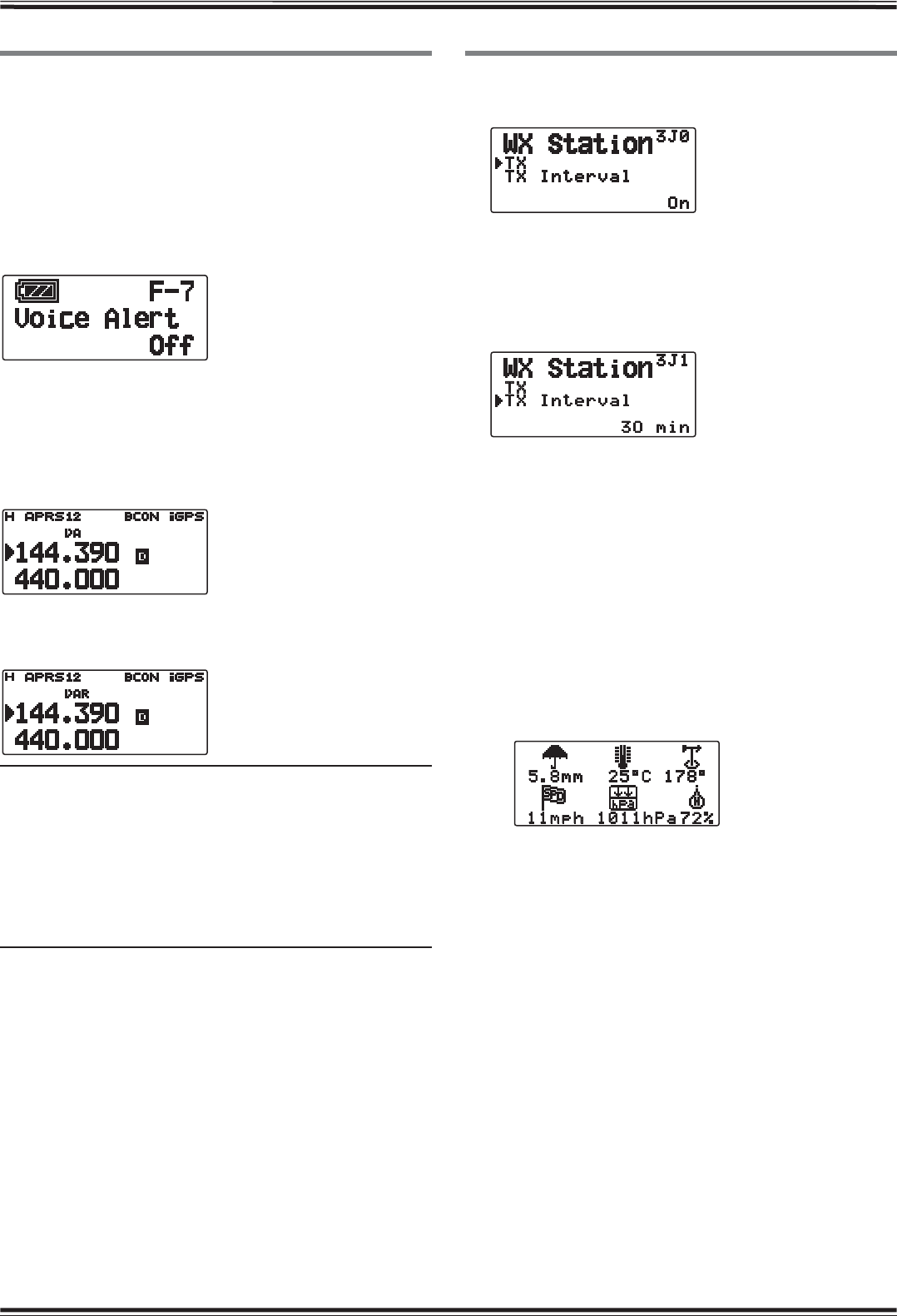
APRS – 20
VOICE ALERT
This function will notify another station as to whether or
not they are within communications range by emitting
beacon tones.
When a Mobile Station is mobile with the Voice Alert
function turned ON, other stations also with Voice Alert
turned ON will hear the beacon sound of the Mobile
Station if they have matching CTCSS frequencies
and are within range, thus informing the stations that
communications is possible.
Press [F], [REV].
You can set Voice Alert to “Off”, “On” or “RX Only”.
When using this function, you must also set up a CTCSS
frequency.
Off: Voice Alert is disabled.
On: A CTCSS frequency is added to the transmitted
packet. “VA” appears above the displayed frequency.
RX Only: A CTCSS frequency is not added to the
transmitted packet. “VAR” appears above the displayed
frequency.
Note:
X When the built-in data band is set to cross band, the Voice Alert
function does not operate.
X Voice alert takes precedence even when TONE, CTCSS and
DCS are set.
X When Voice alert is ON, you cannot perform TONE or CTCSS
frequency selection and DCS code selection.
X When the packet speed is 9600bps, the TONE and DCS will
disrupt the demodulation of the packet when the packet speed
is 9600bps. Set the packet speed to 1200bps when using Voice
Alert.
WEATHER STATION DATA OUTPUT
Q Transmit
Access Menu 3J0.
This setting determines whether or not to transmit the
meteorological data obtained from the Weather Station,
with the APRS data communication.
Q Transmit Interval Time
Access Menu 3J1.
Set the interval at which the meteorological data is
transmitted with the APRS data communication.
The interval can be set to 5, 10, 30, or 60 minutes.
• The following meteorological data is transmitted:
• Rainfall
• Air temperature
• Wind direction
• Wind velocity
• Atmospheric pressure
• Humidity
• This data is transmitted with the APRS standard format
(latitude/longitude and time information).
• You can verify the meteorological data being output by
viewing My Weather Station.


















